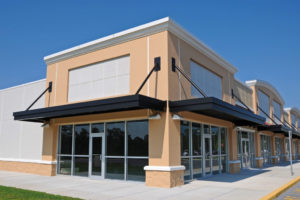
The Wall Street Journal published an article in November highlighting the challenges of the current retail landscape. It points out that while closing stores is a common strategy for chain retailers to stabilize operations during this volatile economic environment, the path to profitability is a lot more complicated.
The retail industry has been struggling with financial and operational challenges for more than a decade. While several macro trends, including the shift towards ecommerce and constantly changing consumer tastes and expectations have benefited the larger and better-capitalized retailers, many middle-market retailers have been scrambling to compete and survive.
Retail is a hyper-competitive space in the United States. Over the past couple of decades, fueled by cheap debt and rewarded by the equity markets for sales growth, many retailers employed an aggressive strategy to expand their physical and geographic footprint. This has resulted in a glut of retail space. In fact, relative to other developed countries, the U.S. has significantly more retail space per capita. According to the financial services firm Cowen, the U.S. has an estimated 23.5 square feet of retail space for every American, compared to 16.4 in Canada and 4.6 in the United Kingdom.
The Amazon Effect. Amazon and the growing acceptance of online shopping has put further strains on brick-and-mortar stores, reducing foot traffic, increasing price transparency, and shifting consumer expectations to fast shipping. COVID-19 has only accelerated the shift towards online sales. This has benefited retailers that have a robust ecommerce presence and an ability to quickly adjust in-store operations to fulfill the newly popular “order online, pickup curbside” option. Some retailers have even temporarily closed stores and converted space into local fulfillment centers or warehouses. Many specialty retailers, however, do not have the resources to make necessary operational adjustments and have struggled to remain relevant to consumers.
As struggling retailers try to adapt to new trends, store closures have been a critical component of retail restructurings and chapter 11 cases. Many retailers have closed stores at the end of the lease term or by negotiating an early termination with the landlord. Others have filed for chapter 11 which affords the opportunity to reject or break an agreement during the contract term without a large cash outlay.
However, rationalizing a store footprint is only one piece of the puzzle. According to the WSJ article, “when a store closes, shoppers don’t always move online…sales can suffer unless retailers have spent to build a web presence.” Struggling retailers need to address the other strategic trends within the industry to return to profitability, including ensuring the retailer is meeting the needs of consumers. For example, retailers that offer diverse, one-stop shopping, like Target and Walmart, are faring much better than specialty chain retailers. Also noted in the article, retailers who have closed stores have struggled to profitably recapture customers online or at their remaining stores. Research suggests that consumers typically don’t travel more than 20 minutes to shop, so many shoppers will not take the extra time to travel to another store location. Meanwhile, retailers must increase their marketing budget to drive online sales and gain loyalty from the customer, which can quickly erode the cost savings benefits of closing stores.
While many retailers are struggling to find their optimal physical store footprint, Retail Ecommerce Ventures LLC (“REV”), founded last year, is betting that they can reinvigorate their portfolio of struggling retail brands with an ecommerce-focused strategy by investing in numerous struggling retailers. For REV, the approach is ecommerce first with physical retail presence to supplement, not the inverse. REV recently acquired the ecommerce assets of RadioShack as well as other iconic retail brands including Pier 1, Modell’s, Dressbarn and Linens ‘n Things.
RadioShack is a prime example of the store footprint challenges facing brick-and-mortar retailers. The company has filed for chapter 11 bankruptcy twice—in 2015 and 2017. In the first bankruptcy, they closed more than 2,200 stores while selling 1,700 stores to an entity affiliated with its pre-petition secured lender. After the first chapter 11, RadioShack was counting on its in-store experience and partnership with Sprint within fewer, smaller stores to return to profitability. Unfortunately, the sales and the partnership with Sprint did not materialize as planned and the company filed for chapter 11 again in 2017. The second time around, RadioShack retrenched to an online focus while supporting its franchise stores.
What’s the verdict? Clearly, one size does not fit all in retail restructuring or transformation. Closing stores does not always improve performance. There are many other operational factors that come into play. And it remains to be seen, but if REV can successfully reinvigorate its portfolio of defunct, iconic retail brands, it could be a new model for the industry. Keep shopping and we’ll all find out.
About the author: Erik White is a Director at Harney Partners that focuses on providing financial and operational advisory services to companies in transition and distressed situations, ranging from Fortune 500 companies to lower middle-market companies. A Certified Insolvency & Restructuring Advisor, he has broad industry experience, including assisting the preparation for RadioShack’s chapter 11 filing in 2015 and the rejection of over 2,000 store leases.

